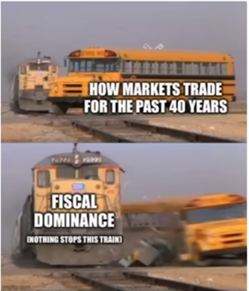
Understanding the nuances between fiscal and monetary policy is essential in grasping the dynamics of economic policymaking. Simply put, fiscal policy pertains to government actions regarding taxation and spending, while monetary policy involves central bank actions influencing the supply of money and interest rates. Now, as we embark on exploring the concept of fiscal dominance and its impact on market dynamics, let’s unravel the intricacies that define this shifting economic landscape.
In the world of economics, the balance of power between fiscal and monetary policy can profoundly shape market dynamics. For the past four decades, monetary dominance has reigned supreme in much of the developed world, particularly in the United States. This era was characterized by the Federal Reserve’s ability to wield interest rates as a powerful tool to stimulate or cool down the economy, influencing inflation and economic growth.
However, a paradigm shift is underway, ushering in the era of fiscal dominance. But what exactly does this mean, and how does it reshape our understanding of market forces?

At its core, fiscal dominance flips the script, making fiscal policy—government spending, taxation, and deficits—the primary driver of economic outcomes. In this new landscape, massive public debts and fiscal deficits hold
[...]